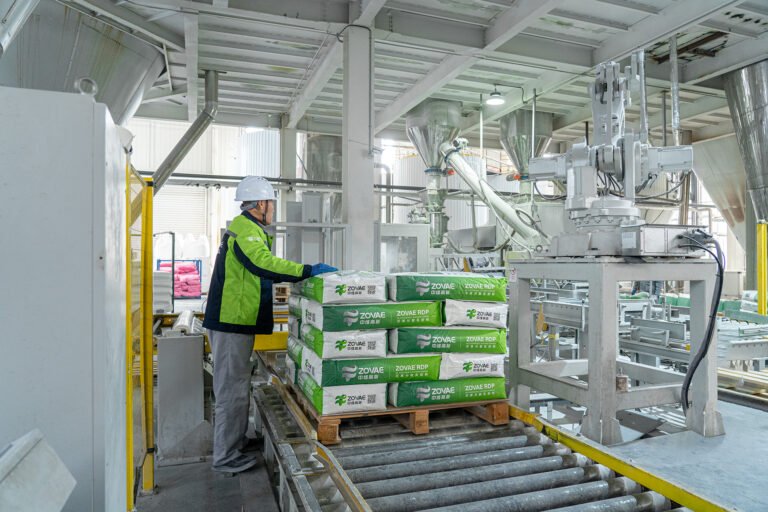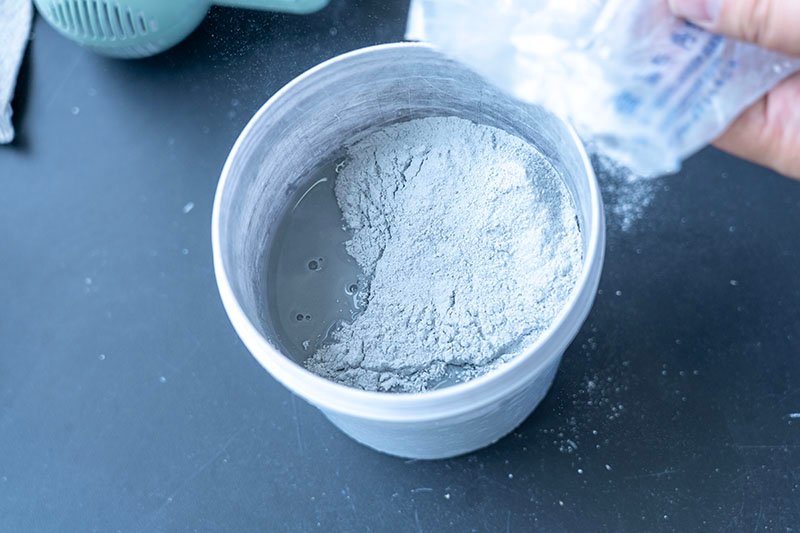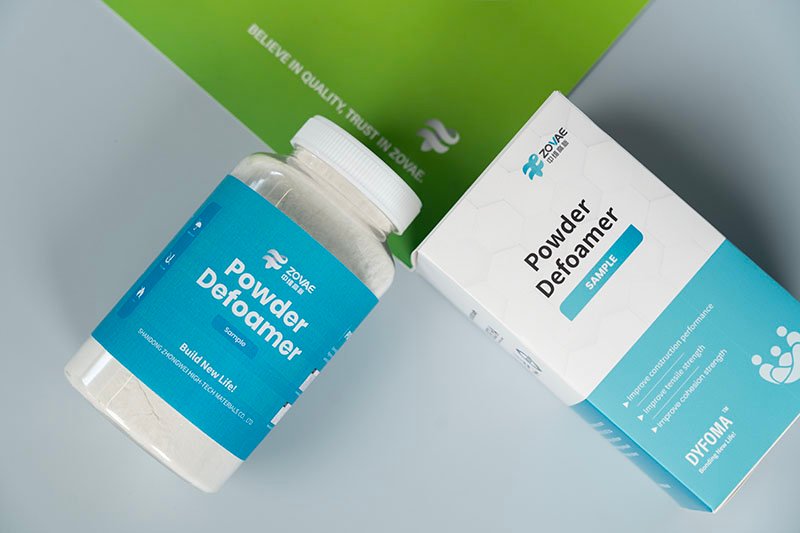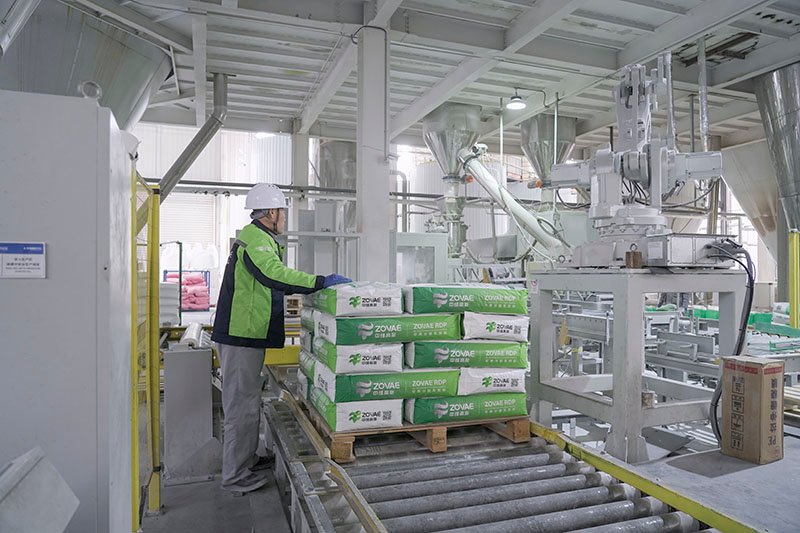Executive Summary
Powder defoamers are solid, free-flowing antifoam agents meticulously designed to eradicate or prevent foam in liquid environments once activated by water. These agents are indispensable in dry-blend formulations such as grouting mortars, plaster mortar, and powder adhesives, as well as in processes where dry additives are favored for logistical efficiency and long-term stability. Their efficacy stems from a triad of synergistic actions: diminishing local surface tension to destabilize foam films, disrupting or thinning bubble walls to induce rupture, and inhibiting foam formation by obstructing stable gas-liquid interfaces. When appropriately selected and dosed, powder defoamers mitigate both micro- and macro-foam, enhance wetting and material transfer, stabilize wet density, and produce cleaner surfaces with reduced pinholes or craters. This extensive guide delves into the principles underpinning powder defoamers, explores selection factors, details application strategies across various systems, provides dosage benchmarks, outlines rigorous quality control protocols, addresses troubleshooting, and highlights sustainability benefits. The mission is to equip industry professionals—formulators, contractors, and engineers—with the knowledge to harness powder defoamers for consistent, high-quality outcomes in construction and industrial applications.
How does a seemingly simple powder transform the behavior of complex liquid systems? In an industry where precision and performance are paramount, understanding and leveraging the capabilities of powder defoamers with Zovae’s expertise can redefine efficiency and end-product excellence.
What a Powder Defoamer Is and How It Works
Definition
A powder defoamer is a dry antifoam formulation that disperses upon contact with water during mixing, releasing active components that eradicate existing foam (defoaming) and prevent the generation of new foam (antifoaming). Unlike liquid defoamers, these solid agents are tailored for integration into dry-mix products, offering unique advantages in storage and handling.
Core Mechanisms (Expanded)
- Surface Tension Reduction: Powder defoamers create localized zones of extremely low surface tension at the air-liquid interface. This disrupts the stability of foam films, causing them to thin and become prone to collapse by reducing the energy required to sustain the bubble structure.
- Film Rupture and Dewetting: Insoluble or sparingly soluble particles or droplets (such as silicone oils combined with hydrophobic silica) penetrate the bubble wall. This intrusion displaces the liquid, initiates dewetting, and triggers the film to burst, effectively dismantling existing foam.
- Spreading and Marangoni Effects: As the defoamer droplet spreads across the foam film, it generates surface-tension gradients that drive liquid away from the film via the Marangoni effect. This accelerated drainage further destabilizes the bubble, hastening its collapse.
- Nucleation Inhibition: By interfering with surfactant layers and providing antifoam “nuclei,” powder defoamers reduce gas incorporation into the liquid, thereby suppressing the formation of stable bubbles from the outset and minimizing foam build-up during mixing or application.
Historical Context and Evolution: The development of defoamers traces back to early industrial processes in the mid-20th century, initially as liquid silicone emulsions for manufacturing. The shift to powder forms in the late 20th century addressed the needs of the construction sector, particularly dry-mix mortars, by offering compatibility with solid blends and resilience in varied storage conditions. Today, advanced powder defoamers from Zovae incorporate hybrid chemistries and optimized carriers to balance performance with environmental considerations, reflecting a growing demand for sustainable additives.
Why Use a Powder (Instead of Liquid) Defoamer?
- Dry-Blend Convenience: Powder defoamers integrate seamlessly into dry-mix products like cement and gypsum mortars, tile adhesives, and skim coats, ensuring uniform distribution without the need for separate liquid dosing systems, thus simplifying production and reducing equipment complexity.
- Storage Robustness: Typically low in volatile organic compounds (VOC), powder defoamers are stable across wide temperature ranges, immune to freezing risks, and lighter to ship due to the absence of water content, making them ideal for global supply chains with variable conditions.
- On-Demand Activation: Remaining inert in dry storage, powder defoamers activate only upon wetting, providing consistent performance during jobsite mixing and minimizing variability compared to liquid alternatives that may degrade or separate over time.
Why opt for powder when liquid defoamers are often faster-acting? The answer lies in the unique logistical and formulation advantages powder offers, particularly in the construction industry where stability and ease of integration often outweigh the immediacy of liquid forms.
Typical Chemistries and Formats
- Silicone-Based Powders
- Composition: Built around polydimethylsiloxane (PDMS) and its derivatives, often supported on hydrophobic silica or mineral carriers, sometimes augmented by waxy co-components for enhanced performance.
- Strengths: Deliver rapid foam knock-down, operate across broad pH and temperature ranges, require low dosages, and excel at controlling microfoam in high-shear environments.
- Notes: Overdosing risks surface defects like craters or fisheyes in ultra-smooth finishes if not compatible with the system’s chemistry.
- Mineral-Oil/Hydrocarbon-Based Powders
- Composition: Comprise refined oils, paraffins, or waxes encapsulated on carriers like silica or carbonates.
- Strengths: Provide effective defoaming in many cementitious and gypsum systems at a cost-competitive price point, suitable for bulk applications.
- Notes: Typically slower in action compared to silicones and may require higher doses to achieve comparable results.
- Polyether/PAG and EO/PO Block Copolymer Powders
- Composition: Based on polyalkylene glycols (PAG), occasionally blended with waxes and silica for improved dispersibility.
- Strengths: Offer a balanced approach to defoaming and deaeration, posing lower crater risk in finishing applications where surface aesthetics are critical.
- Notes: Their solubility profile must align with the system’s requirements; they can be less effective in extremely high-alkalinity environments unless paired with robust carriers.
- Hybrid Systems
- Composition: Combine silicone with polyether or wax components to expand operational temperature windows, enhance compatibility, and harmonize foam knock-down with surface quality.
- Strengths: Tailored for complex formulations requiring nuanced performance, often reducing the trade-offs seen in single-chemistry systems.
- Carriers and Granulation
- Carriers: Include hydrophobic silica, calcium carbonate, diatomaceous earth, or specialty mineral fillers to improve powder flow and metering accuracy during manufacturing.
- Granulation: Dust-reduced granules enhance handling safety and reduce caking tendencies; however, their dispersibility upon wetting must be verified to ensure activation in the liquid phase.
Where Powder Defoamers Are Used
- Dry-Mix Mortars: Essential in tile adhesives (C1/C2 classifications), renders and plasters, skim coats, EIFS/ETICS basecoats, masonry mortars, repair mortars, self-leveling underlayments (SLU), and grouts, where entrained air can disrupt flow, density, and bond.
- Gypsum Systems: Widely applied in joint compounds, plasters, and putties to control foam that affects surface smoothness and setting characteristics.
- Powder Adhesives and Fillers: Utilized where entrained air compromises transfer efficiency, open time, or bonding strength, ensuring consistent application.
- Other Aqueous Processing: Relevant in any system where a dry-form defoamer is preferred, activating upon hydration or mixing to manage foam in industrial or construction processes.
Moreover, in regions with extreme climates—from the arid Middle East to humid Southeast Asia—powder defoamers maintain integrity during transport and storage, a critical advantage over liquid counterparts for global supply chains.
Selecting the Right Powder Defoamer (Decision Factors)
- Substrate and Finish Sensitivity:
- High-Sheen/Ultra-Smooth Finishes: Opt for chemistries with lower crater risk, such as balanced silicone-polyether hybrids or non-silicone options, paired with precise dosing to prevent surface imperfections.
- Structural Mortars/Adhesives: Prioritize faster, more potent silicone systems for efficient foam knock-down and wet density control, where surface aesthetics are secondary to performance.
- System Chemistry and pH:
- Cementitious Systems (High pH, Ionic Strength) : Silicone and mineral-oil powders on hydrophobic carriers exhibit robust performance under alkaline conditions typical of concrete and mortar.
- Gypsum Systems (Near-Neutral to Mildly Alkaline) : Broader chemistry options are viable; ensure set time and foam interactions are tested to avoid delays or inconsistencies.
- Additive Package Compatibility:
- Components like superplasticizers (e.g., PCE), cellulose ethers (HPMC/MHEC), air entrainers, and wetting agents can elevate foam tendency. Screen defoamers for compatibility to prevent microfoam resurgence or surface defects like fisheyes.
- Temperature and Mixing Shear:
- Hot mixes or high-shear mixing environments entrain more air, necessitating stronger, less soluble defoamer chemistries or slight dose escalations to maintain efficacy.
- Process and Logistics:
- Early Addition (Preferred) : Incorporating defoamer with the initial dry blend or early wetting phase maximizes antifoam efficiency by addressing foam at inception.
- Re-Mix Window: Select defoamers tolerant of re-mixing without foam redevelopment, especially for jobsite applications with variable mixing durations.
Which defoamer will harmonize with your formulation? The choice hinges on a nuanced balance of chemistry, application context, and additive interplay—factors Zovae can help navigate with targeted testing and recommendations.
Dosage Starting Points and Adjustment
- Cementitious Dry-Mix Mortars (By Total Dry Mix Weight)
- Tile Adhesives/Renders/Repair Mortars: 0.02–0.10% as supplied, titrating based on foam levels and flow requirements.
- Skim Coats/Finishing Putties: 0.05–0.20% as supplied, balancing pinhole suppression with surface finish to avoid over-defoaming defects.
- SLU/Flowable Systems: 0.05–0.15% as supplied, combining stronger defoaming with stability achieved via low VMA dosages.
- Gypsum Systems (By Total Dry Mix Weight)
- 0.03–0.20% as supplied, adjusted for air content targets and finish sensitivity to ensure smooth application without compromising set characteristics.
- General Guidance:
- Initiate with low doses and incrementally increase to achieve the wet-density or entrained-air target; avoid overdosage, which risks surface defects (craters, fisheyes) or wetting issues that impair performance.
- If microfoam persists despite practical dosing, re-evaluate compatibility with superplasticizers and wetting agents; switching chemistries may outperform mere dose hikes, preventing unintended side effects.





